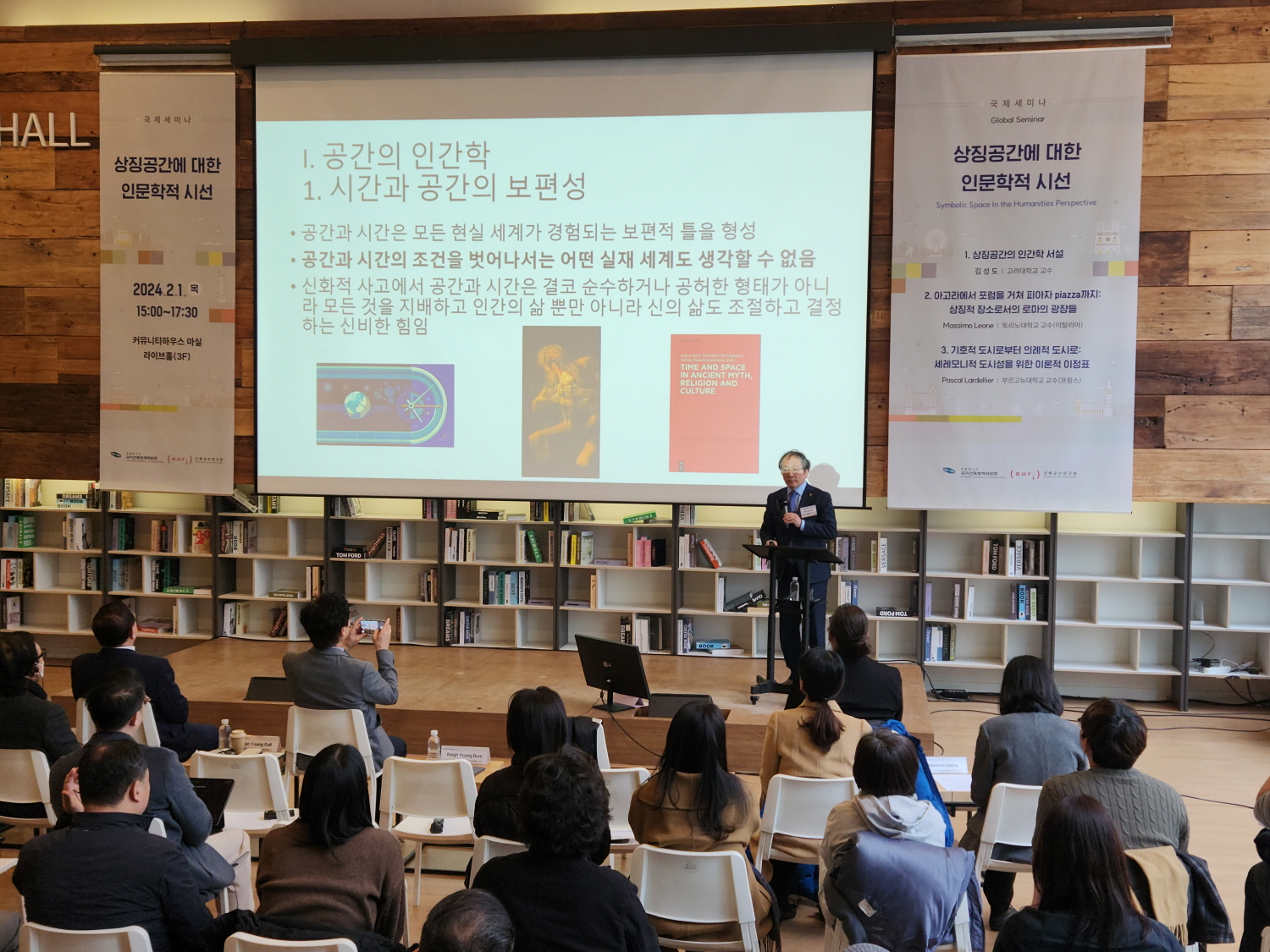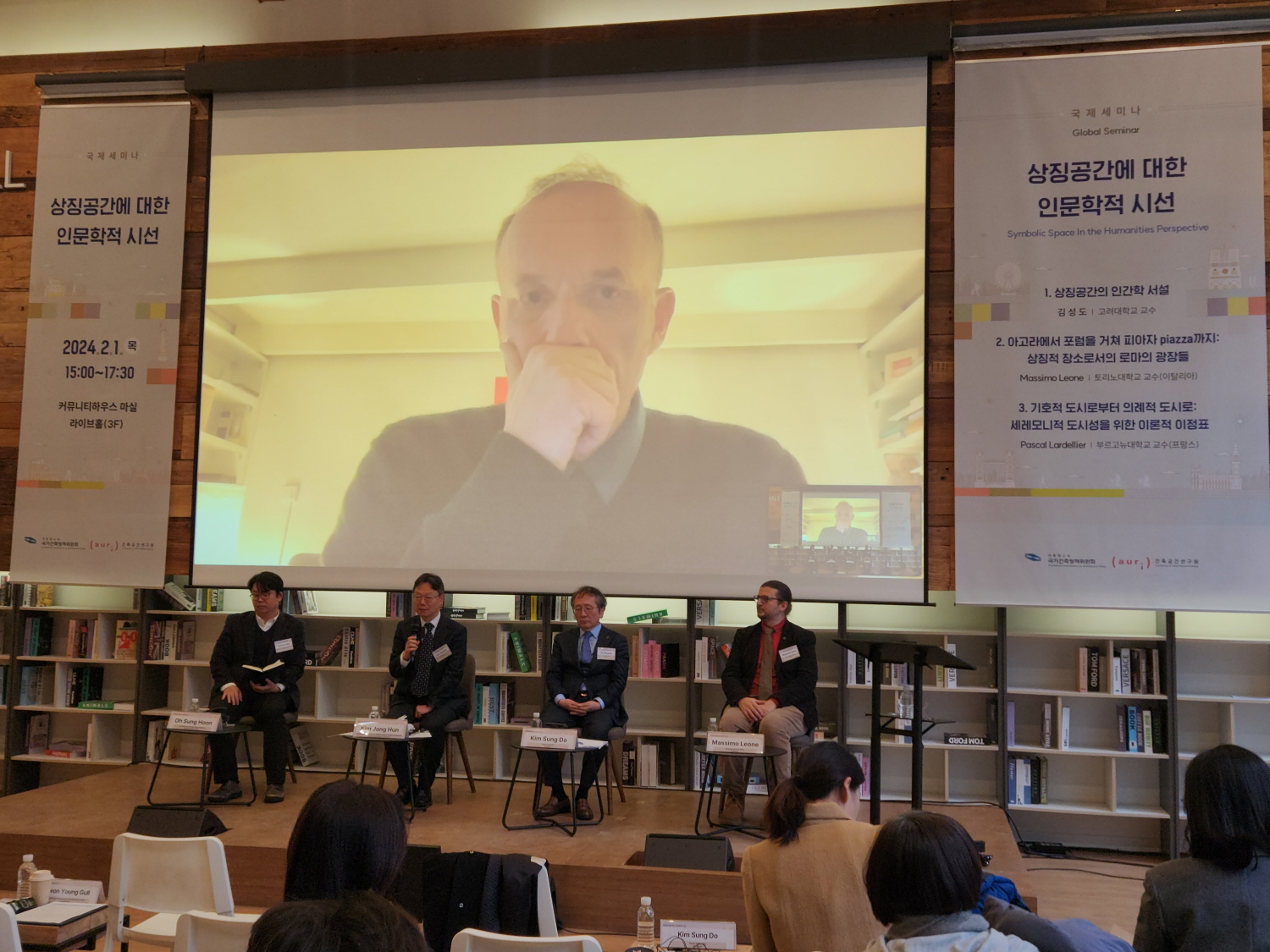SPACE MARCH 2024 (No. 676)


International seminar on ‘Symbolic Space in the Humanities Perspective’ Image courtesy of Architecture & Urban Research Institute
On Feb. 1, an international seminar on Symbolic Space in the Humanities Perspective hosted by the Presidential Commission on Architecture Policy (hereainfter PCAP) and Architecture & Urban Research Institute took place in Masil Live Hall Community House. The Seoul Metropolitan Government and PCAP signed an MOU last Sep. to create national symbolic spaces targeting major historical and cultural spaces in Seoul, including the Cheong Wa Dae and Yongsan Park. The international seminar was organised to invite scholars from Korea, Italy, France to examine the meaning of symbolic space in various histories and cultures from a humanistic perspective and to consider the value of symbolic space for contemporary Seoul.
Kim Sungdo (professor, Korea University) explained the inseparability of space, memories, and symbolism through his lecture on ‘An Introduction to the Anthropology of Symbolic Space’. He said that space is intimately interconnected with human memory and regenerative as a result of social relationships; therefore, it is always loaded with symbolic and political meaning. He emphasised the power of symbolic space for social and political communities by pointing out that cities are where collective memory is most acute. However, Kim said that ‘Seoul in its 20th century fell into a severe collective amnesia due to its neglect of the temporal depths of the city’, and proposed borrowing the concept of a ‘temporal collage’ by an American urban theorist Kevin Lynch as a means of recovering lost memories and restoring the symbolism of space. With its rich historical assets, Seoul is an ideal city for temporal collage, and the hope is that the juxtaposition of past and present will reveal the passage of time, creating an urban landscape with a clear historical depth.
Massimo Leone (professor, University of Turin) presented a paper on the theme of ‘From Agora to the Forum to the Piazza: Rome’s Squares as Symbolic Places’. He underscored the importance of reflecting the historical and cultural idiosyncrasies of each society in creating a symbolic space, citing the Gwanghwamun Square, Seoul Plaza, along with the numerous squares of Rome. Furthermore, he mentioned that if the concepts behind the Roman square, such as the harmony of modernity and tradition, and the integration of the city and nature, are introduced in accordance with Seoul’s unique landscape and culture, a new symbolic space unique to Seoul could be created. Pascal Lardellier (professor, University of Burgundy), on the otherhand, looks at symbolic spaces through ritual aspects. Historically, cities originated as places for ceremonies that formed collective identity and belonging, and had an internal and exclusive characteristics. However, increases in travel and collapse in the sense of belonging in contemporary cities have weakened the ceremonial characteristics of modern cities, therefore the urban model is gradually shifting from ‘communion’ to ‘communication’. He explained that modern cities are focused on openness rather than closure, events rather than rituals, and are aiming for symbolic spaces that capture the region’s unique storytelling.
In following discussions, Kim Jonghun (professor, Pai Chai University), a member of PCAP, argued that in order to secure Korea’s unique and important identity, we must look not only at the high points in history but also at how we overcame hardships such as the Japanese colonial period and the Korean War. In addition, he referred to the current Korean Peninsula as a ‘melting pot’, as contemporary Korean society is experiencing an era of a formation of new culture, from a mix of various cultures of the East and West. He ended the session with the hopes that we can find the possibility of creating our own symbol from a humanistic perspective based on this new momentum.





